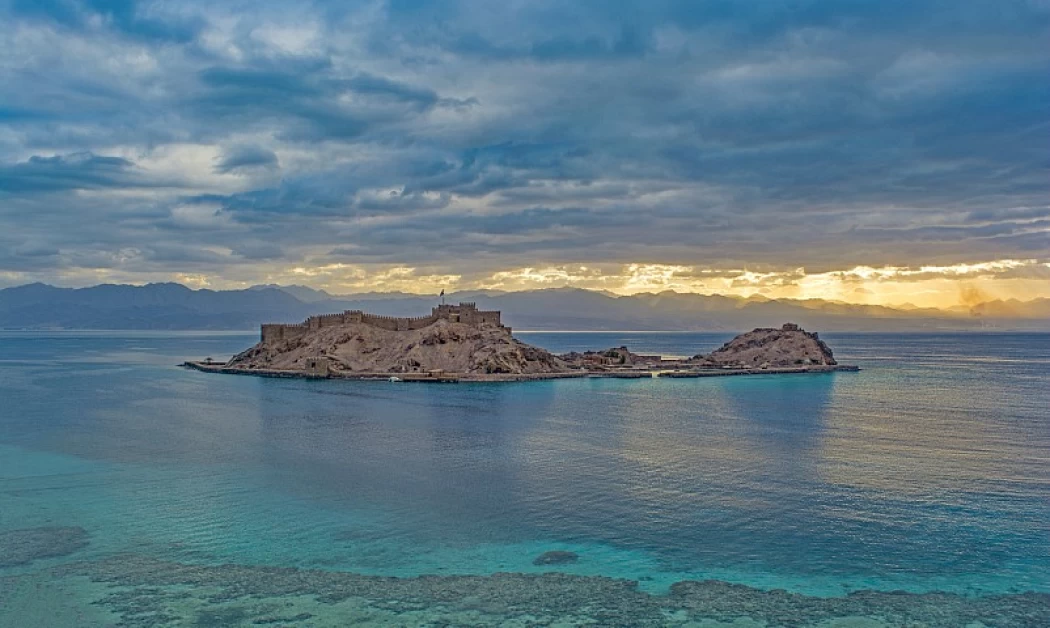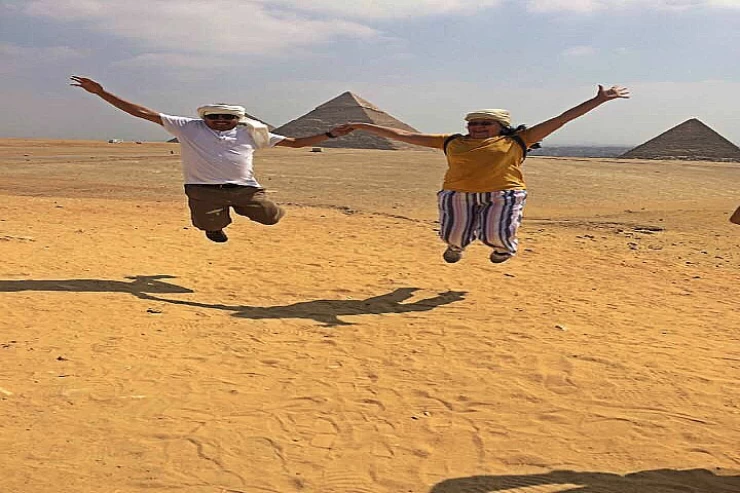
Salah El Din Castle Near Taba in Egypt
Salah El Din Castle Near Taba in Egypt
The area's archaeological remains date back to the Byzantine period, with a lighthouse to guide ships in the Gulf of Aqaba built by Emperor Justinian in the 6th century AD, as well as a church dating back to the same period that was not harmed when Saladin built his famous castle on the island in 567 AH 1171 AD.
Saladin was able to exploit the surrounding environment to build the castle, the presence of a hill from which the granite stones used in the construction were cut, a ‘mortar’ whose composition includes the silt produced by the torrents in the region, the exploitation of the hill itself to build on it, taking into account the different levels of steepness and less steepness, the construction of defensive architectural elements such as towers, walls, weapons manufacturing furnace, military fortifications, stores for supplies and ammunition, a hall for military consultations, living elements of soldiers' rooms, steam bath, grain stores, water tank, water cistern, and religious elements of the castle's mosque.
The location exhibits a natural ingenuity due to the existence of a castle built on top of a hill which is surrounded by picturesque views of the coral reefs of an internationally recognized diving area in addition to the breathtaking “view scape” offered by the monument which is enclosed with archeological rock carvings of the Nabatean community found in areas like Wadi Tuiba, beautiful mountain ranges and the fact that the Taba National park is also located here which is the first National park in the Sinai Peninsula after Saint Catherine’s Monastery.
The most notable monument in Taba history is the Salah al-Din Castle erected on Pharaoh’s Island, and with regard to the latter name it should be clarified that the Pharaoh’s Island is not connected with any of the Pharaohs Dotted across the Nile Valley, as the island in question was devoid of the activities of the ancient Egyptians who were primarily based in Sinai along the famed Horus Road in Northern Sinai, the full of turquoise and copper mining region of Sarabit al-Khadem, cave and Wadi al-Nassab in Southern Sinai – the last two locations stressing that the oldest presence on the island was for the Nabataean Arabs who interestingly the island had its fair share of activities during the six hundred AD.















